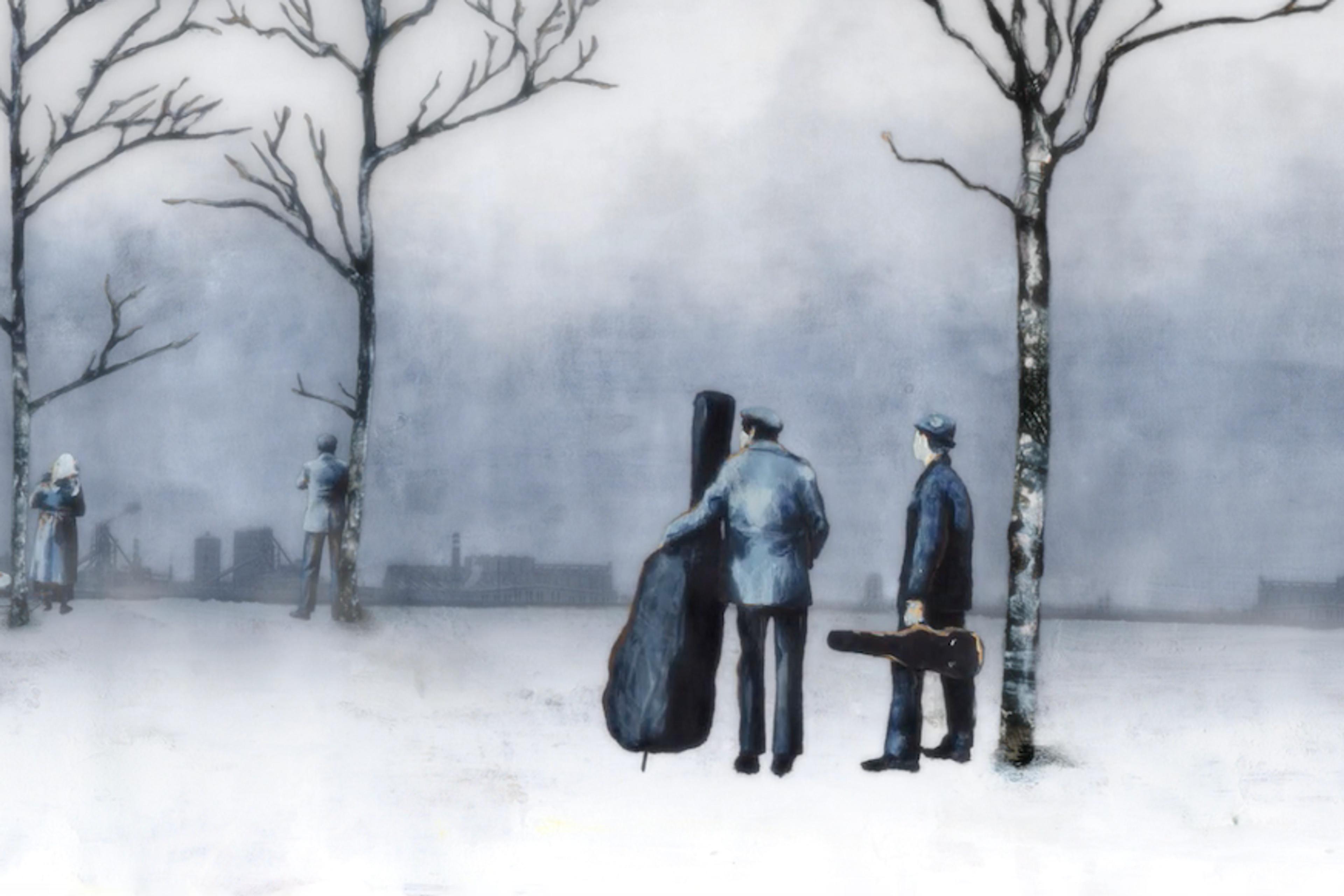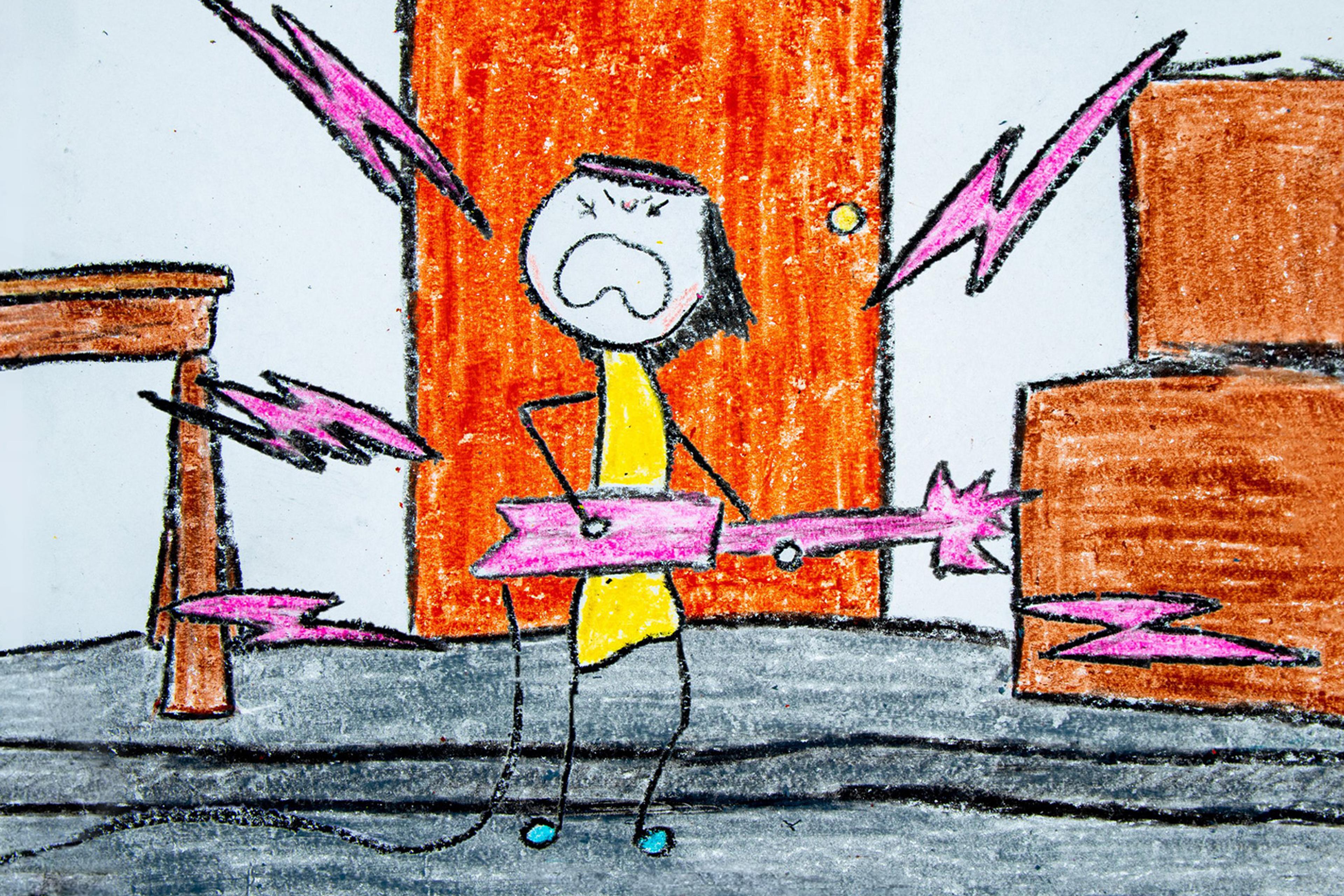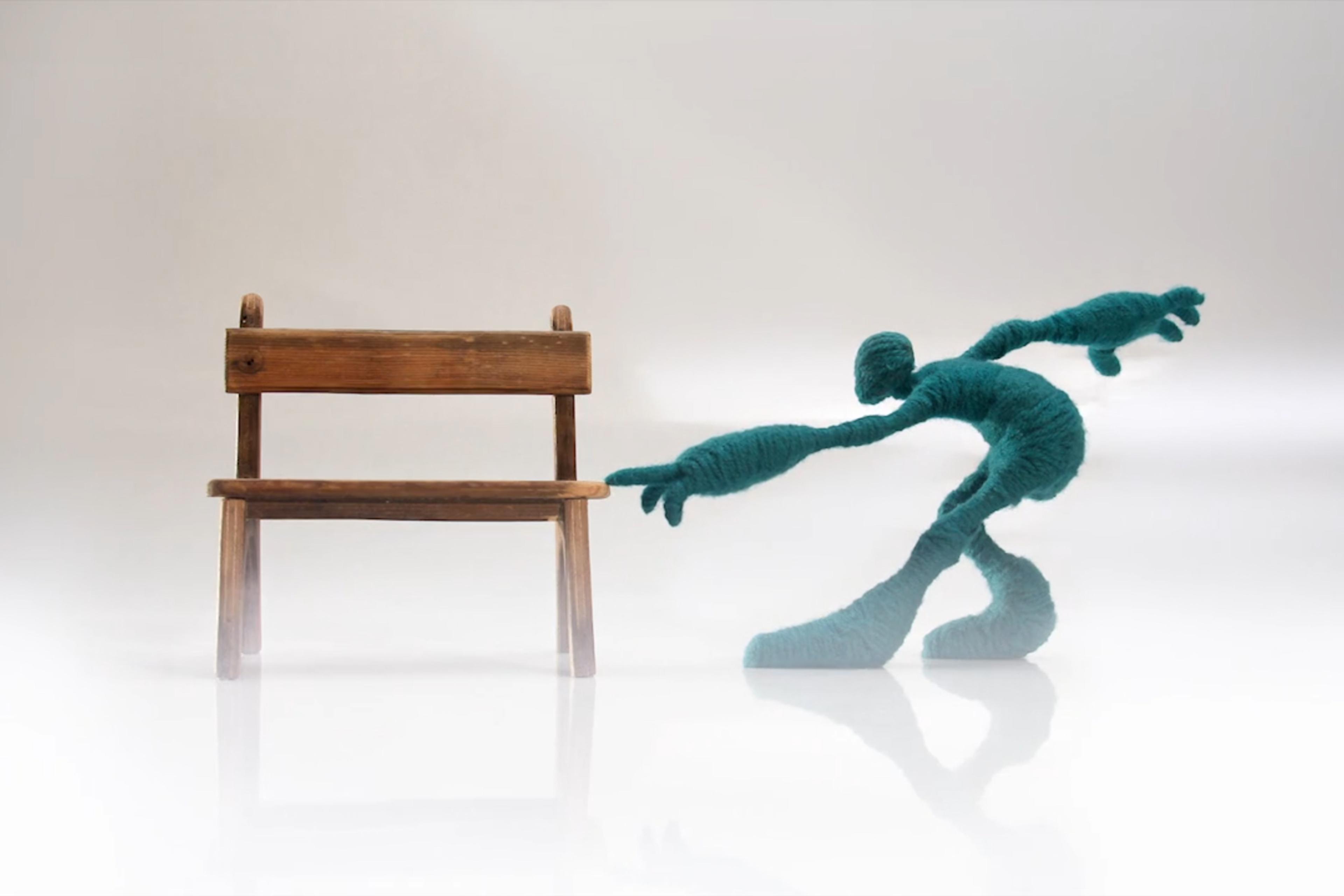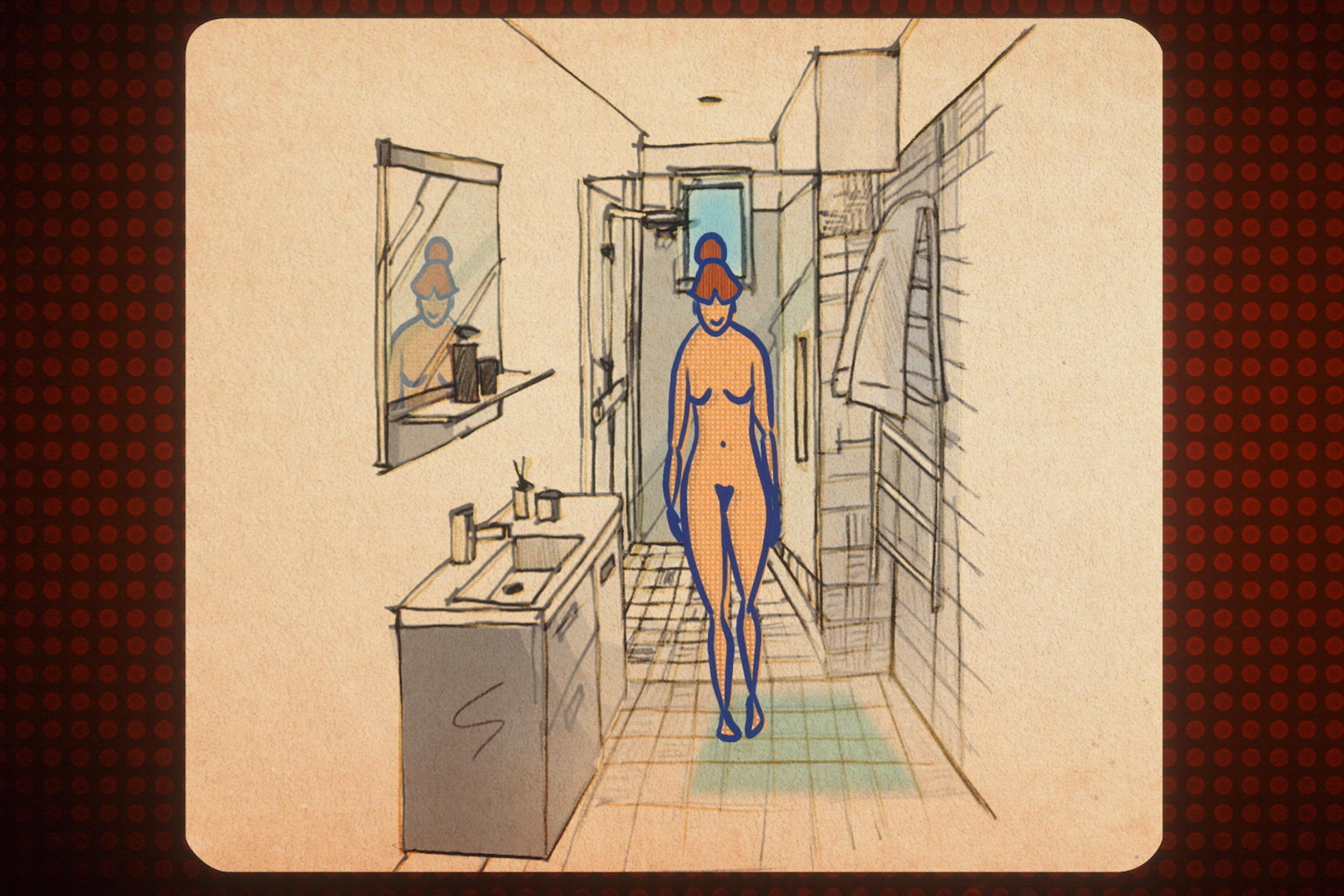… If the little
Ones say, Daddy, play horse, here’s
A rope – does he answer like a joke:
I seen enough rope for today?
In his poem The Hangman at Home (1922), the US poet Carl Sandburg ponders the life of the titular hangman, asking a series of questions that juxtapose the violence of his work with his quaint home life. This adaptation from Michelle Kranot and Uri Kranot, a husband-and-wife filmmaking team originally from Israel and now based in Denmark, pairs Sandburg’s words with five animated fragments, each of them unfolding in a single room amid intimate, private moments. In one scene, a man calmly steps through what appears to be his bombed-out home, with the sounds of air raid sirens eventually blaring in the background. In another, a man tends to a bedridden loved one who seems to be near death. Yet another scene mirrors a line from the poem in which one of the hangman’s children asks him to ‘play horse’.
The work rewards the viewer’s patience as it slowly tugs at Sandburg’s words. Over the film’s duration, these scenes, which are at first opaque, coalesce into a commentary on the mysteries humans so often are to one another, and the disparate, sometimes contradictory, roles we play. The experience is at once transfixing and confronting. In some moments, these uncanny animated figures stare directly towards the audience, appearing to be aware of our intrusions into their worlds. The resulting tension seems to acknowledge the strength of the walls between our public and private selves, and the discomfort that arises when these boundaries are broken.







